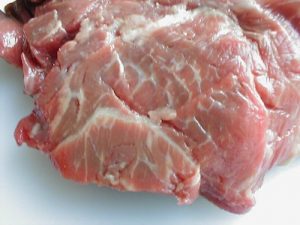 How Safe is Our Food?
How Safe is Our Food?
May 8, 2012More and more countries are banning imports of American food products for safety reasons.
Last week, Indonesia became the first country to halt imports of US beef
following the discovery of an American dairy cow infected with mad cow
disease, or bovine spongiform encephalopathy. The disease is fatal to
cows and can cause a deadly brain disease in people who eat tainted
beef.
“We will lift the ban as soon as the US can assure us its
dairy cows are free of mad cow disease,” said Rusman Heriawan,
Indonesia’s vice agriculture minister. “It could be one month or one
year. It depends on how long it takes to resolve this case.”
One
would think the US government would immediately test beef to make sure
it’s safe. But the USDA, which regulates the test, administers it to
less than 1% of slaughtered cows. Worse, until 2007 it was illegal for private beef producers to test their own cows for the disease!
Larger meat companies feared that if smaller producers tested their
meat and advertised it as safe from mad cow disease, they too might be
forced to test all their cows—so they persuaded USDA to block individual
producers from doing the test. In 2007 a federal judge said this practice could no longer stand.
The highest risk occurs if animals or humans eat infected brain or nerve tissue.
Meat unconnected to bone, milk, and hooves are supposed to be safe, but
who knows for sure? The ultimate source of mad cow, of course, is the
filthy and disease-ridden (not to mention inhumane) conditions in CAFOs, or concentrated animal feedlot operations.
In February, Taiwan began refusing meat products from the US because they contain ractopamine,
a leanness- and growth-promoting drug used widely in pork and beef
production in the United States. Taiwan has a zero-tolerance policy for
the drug.
Ractopamine is banned in 160 nations
including Europe because it is responsible for hyperactivity and muscle
breakdown in pigs, and a 10% increase in their mortality rate. It was
banned in China after more than 1700 people were “poisoned” from eating
American pigs that had been given ractopamine. The drug bears the warning label,
“Not for use in humans. Individuals with cardiovascular disease should
exercise special caution to avoid exposure. Use protective clothing,
impervious gloves, protective eye wear, and a NIOSH-approved dust
mask’’—yet somehow it is considered safe in human food. How is this
possible?
Most of the world’s developed countries
ban, or have at least placed limits on, genetically modified organisms.
The European Union and its member states, as well as Switzerland,
Norway, Australia, New Zealand, Thailand, the Philippines, Saudi Arabia,
Egypt, Algeria, Brazil, and Paraguay all have restrictions or outright
bans on the use or importation of genetically engineered seeds, plants,
or foods. A detailed map with the specific products banned in Europe is available here.
This is one reason the California Right to Know 2012 Ballot Initiative is so important.
If California requires labeling products containing GMOs, it will be
difficult for most manufacturers to create separate labels for their
products sold in other states, so the labeling will become national.
This is why we are trying to help the Right to Know Campaign raise one
million dollars to drop a “money bomb” on Monsanto—to combat the
anti-GMO propaganda and get this proposition passed in November. If you
haven’t done so already, please make a donation to the Right to Know Campaign—and please give generously!  Source: http://www.anh-usa.org/how-safe-is-our-food
Source: http://www.anh-usa.org/how-safe-is-our-food
No comments:
Post a Comment